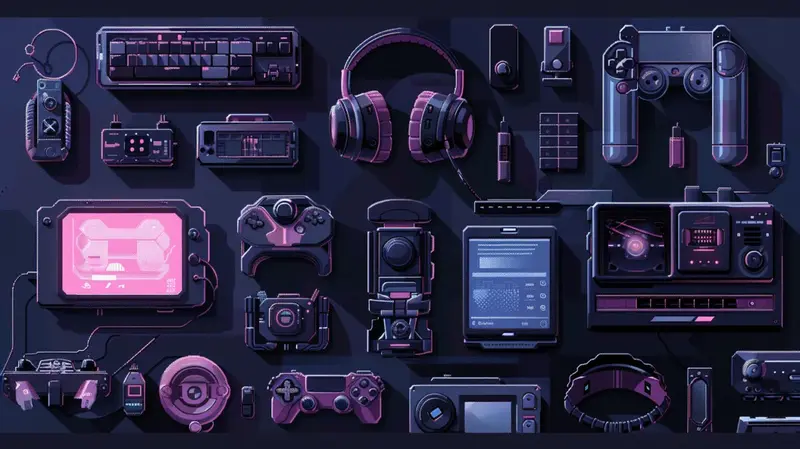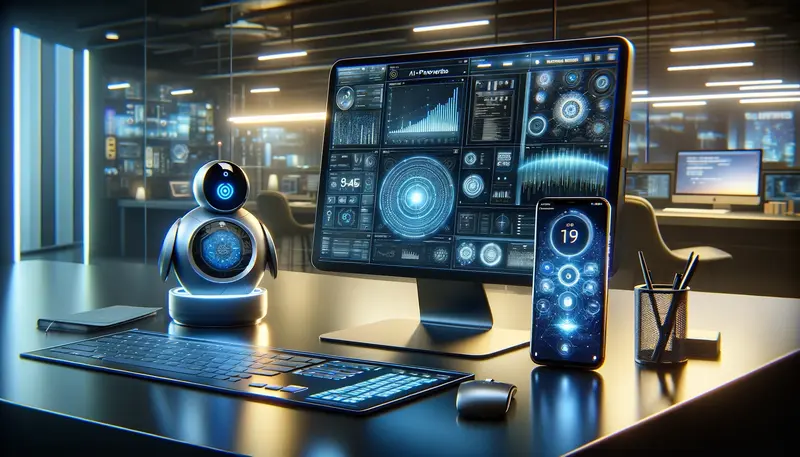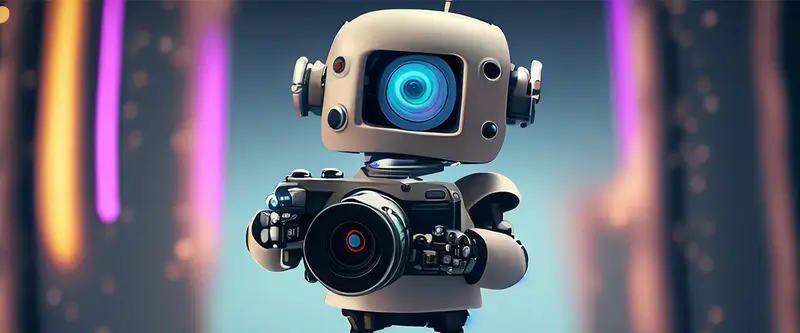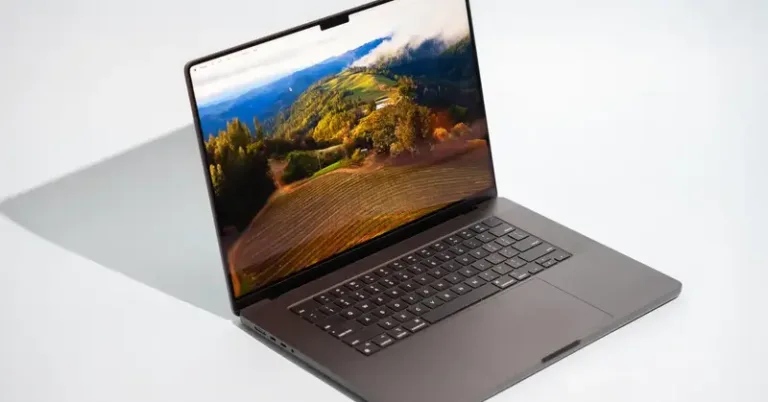Quick Overview
Artificial intelligence is no more only a concept found in science fiction movies and academic research; it is becoming a greater and more important aspect of our daily lives, particularly in the area of personal generation. From smart home appliances to wearable technology, these gadgets are revolutionising how we engage with younger generations, offering new skills, improving consumer research, and improving technology’s intuitiveness and responsiveness. We shall investigate how is influencing the course of the private period in this blog by examining popular modern gadgets and the roles that their innovation plays.
Including Personal Technology in Integration
AI as the Main Engine
Artificial Intelligence (AI) technology, which includes computer vision, natural language processing, and system learning, is the foundation of many contemporary devices. Thanks to these technological advancements, devices can now comprehend patterns, identify human language, and learn from statistics, gradually becoming more intelligent and powerful.
Customization and Flexibility
The ability of personal technology to be customised and adjusted to individual consumer tastes is one of its greatest major accomplishments. Through the analysis of human behaviour and interactions, devices can be programmed to respond and function in ways that better suit user preferences, resulting in more customised technology and more effective consumer experiences.
AI-Powered Wearable Technology

Smartwatches
Advanced Health Monitoring: With its powered sensors, modern smartwatches offer extensive health monitoring capabilities. These include blood oxygen levels, ECG tracking, coronary heart charge monitoring, and even sleep assessment. Algorithms analyse this data to provide practical insights, including identifying irregular heartbeats or sleep issues, and providing advice on improving wellness and fitness.
Using trends: in individual data, predictive analytics enables smartwatches to anticipate health issues before they arise. For instance, a smartwatch may notify the user to seek medical assistance if it finds a sample suggestive of sleep apnoea.
Improved User Interfaces: Keeping in mind more natural interactions, it also enhances the wristwatch technology’s user interface. It is easier to access and operate those devices with voice instructions, gesture controls, and context-aware notifications.
Trackers for Fitness
Customised Workout Programs: With the use of fitness tracker technology, users may design customised workout programs that are entirely dependent on their fitness levels, historical records, and goals. These trackers evaluate total performance measures using machine learning algorithms, then modify recommendations to maximise results.
Real-Time Feedback: It can provide users with real-time feedback on their exercise form, speed, and depth throughout workouts, enabling them to reach their health goals more skilfully and successfully.
Insights into Recovery: Enhanced fitness trackers also provide information about recovery and typical well-being, assisting users in avoiding and effectively managing problems.
AI-Renowned Smart Home Technology

Smart Speakers
Voice Assistants: Powered voice assistants (Alexa, Google Assistant) are used by smart speakers, such as the Amazon Echo and Google Home, to carry out a variety of functions, such as answering enquiries, making reminders, and managing smart home appliances. Natural language processing is used by these assistants to comprehend and react to human requests with ever-increasing precision.
Contextual Awareness: To deliver more pertinent responses and suggestions, sophisticated smart speakers can make use of contextual data, such as the time of day and user preferences. For example, they could offer a recipe for breakfast in the morning or play soothing music at night.
AI makes it possible for smart speakers to serve as the centre of smart home ecosystems, allowing them to easily interface with other gadgets such as security systems, lights, and thermostats. This makes automatic
Smart Thermostats
Adaptive Learning: To optimise heating and cooling schedules, AI-powered smart thermostats—such as those from Nest and Ecobee—look at user behaviour and preferences. They adjust the temperature according to advanced power performance, comfort, and variables including occupancy, weather, and time of day.
Predictive maintenance: These thermostats are used to show the overall functioning of the device and anticipate possible problems before they become significant ones. They can help users prevent costly malfunctions by reminding them when maintenance or renovations are due.
Voice commands and remote control: Artificial intelligence enhances the capabilities of smart thermostats by enabling remote control via mobile apps and voice commands using smart audio systems. This enables users to control temperature remotely and integrate climate control into more sophisticated home automation systems.
AI-Powered Desktop Computers

Laptops and Desktops
Performance optimisation: is a term that is becoming more and more common for desktop and laptop computers. AI algorithms have the ability to dynamically adjust GPU and CPU consumption based entirely on the workload at hand, increasing battery life and enhancing speed and efficiency.
Enhanced Security: It improves laptop security by immediately identifying and addressing capacity threats. Antivirus and anti-malware software powered by AI is capable of identifying and eliminating threats faster than traditional methods.
Intelligent Support: Powered digital assistants, such as Apple’s Siri and Microsoft’s Cortana, offer users astute help with tasks like calendaring, email management, and information retrieval. Over time, these assistants become more skilled, learning from customer interactions to offer more accurate and helpful assistance.
Software Driven by AI
Content Creation: With tools for writing, photo editing, and video production, content introduction is being revolutionised. The creative process can be greatly accelerated by using pushed software, which can produce text, approve modifications, and even create material entirely from user input.
Data analysis: Advanced software tools can analyse enormous amounts of statistical data and offer insights that may be challenging to obtain manually. This includes spotting trends, writing reviews, and creating data-driven recommendations.
Automation of Repetitive Tasks: It can save up time for more intricate and creative projects by automating repetitive tasks like document control and records access.
AI-Powered Camera and Video Devices

Cameras
Modern cameras have smart focussing algorithms that improve autofocus performance by analysing scenes and accurately identifying objects. This ensures that even under challenging circumstances, photos and videos are crisp and well-composed.
Real-Time Scene Analysis: It improves images significantly by examining and instantly modifying parameters including exposure, white balance, and colour correction. This enables people to capture beautiful photographs without requiring much technological knowledge.
Enhanced Editing: With the use of filters, colour correction, and stain removal, powerful editing technology may automatically improve images and films. This streamlines the set up-processing procedure and enables users to produce results that seem professional with little effort.
Drones
Intelligent flying Features: This is a revolution in drone technology, incorporating intelligent flying features like autonomous monitoring, obstacle avoidance, and enhanced flight planning. These features facilitate more complex aerial photography and cinematography and make drones easier to operate.
Enhanced Stability and Control: By modifying fly paths, accounting for wind conditions, and maintaining clear images, its algorithms enhance drone balance and manoeuvrability.
Real-Time Data Analysis: This feature enables precise mapping and surveying of large areas by drones in real-time. This is especially helpful for sectors like production, agriculture, and environmental monitoring.
Artificial Intelligence in Personal Technology: What’s Next?
Internet of Things and Artificial Intelligence
Smart Ecosystems: will continue to be essential to the development of smart ecosystems, which are networks of linked devices that work together to produce seamless and effective settings through communication. This covers everything, from smart homes to smart communities, that maximise the use of energy, transportation, and public services.
Improved User Interactions: As technology develops, we can anticipate more organic and intuitive interactions between users and devices. Improved voice recognition, gesture control, and context-aware replies are a few examples of how technology is becoming more useful and approachable.
Ethical Issues and Difficulties
Privacy and Security: As we go more into the public sphere, concerns about privacy and security will take on greater significance. Maintaining consumer consideration may require making sure that systems protect against capability risks and appropriately handle user information.
Fairness and Bias: Algorithms must be created with equality in mind, avoiding biases in their decision-making processes. For technology to be inclusive and egalitarian and to effectively serve all users, those issues must be resolved.
Accountability and openness: As systems become increasingly self-sufficient, it is crucial to maintain accountability and openness in their workings. This entails ensuring that users have control over their data and interactions with technology, as well as providing clear justifications for decision-driven choices.
It is leading the charge to revolutionise personal technology and usher in a new era of intelligent, user-friendly, and reasonably responsive gadgets. Our lives are becoming more easy, efficient, and interesting thanks to innovations in wearable technology, smart home technology, personal computers, and sophisticated image tools, all of which are enhancing our interactions with younger generations.
The ongoing integration into private technology promises to provide even more ground-breaking and revolutionary technologies as we look to the future. By being up to date on these developments and understanding their potential impact, we may better prepare for a time when artificial intelligence will play a more significant role in our everyday lives.
Accepting the potential of AI-powered devices and tackling the associated issues may be essential to determining how the next generation of technology will serve us in more meaningful and potent ways. The personal AI journey is just getting started, but the opportunities are both endless and fascinating.
For more blogs on new latest mobile Technology visit TECHMOBUZZ or check us on Facebook.


